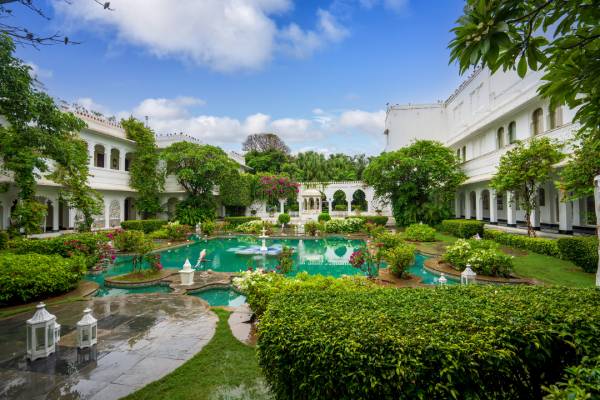The travel and tourism sector in the Asia Pacific region is witnessing an impressive recovery and is approaching pre-pandemic levels. The region offers a diverse range of travel options and experiences, making it one of the most sought-after destinations and a key driver of global tourism growth. With the region’s growing popularity, its travel market is expected to be valued at $689.5 billion by 2030, registering a CAGR of 6% from 2019 to 2030, according to a LinkedIn analysis.
Luxury tourism is a significant sector in the region and continues to be a growth driver for the market. Southeast Asian travellers are increasingly exploring luxurious and distinctive travel options, turning to high-end cruises, rail travel and sustainable holidays. A whopping 68% of travellers plan to spend more on travel in the next 12 months, according to a recent survey by Luxury Group by Marriott International.
Studying the travel preferences of high net worth (HNW) travellers in Asia Pacific, the study found that 89 per cent of Indians plan to spend more on travel, while 74 per cent plan to travel within Asia Pacific. HNW travellers from Australia, Singapore, South Korea, Japan, Indonesia and India tend to travel frequently and take longer holidays, especially in the Asia Pacific region. Travellers are planning an average of six leisure trips in the next 12 months, while 33 per cent of respondents are planning at least seven holidays this year. On average, a short break is three nights while a long break is two and a half weeks.
Australia is the most preferred destination (46%), followed by Japan (42%) and Hong Kong (27%). Around 69% of Indian high net worth tourists are planning a trip to Australia and it is the most preferred destination for tourists from Indonesia, Japan and Singapore.

Food is a major motivator for travel, as evidenced by the 88% of respondents who prioritized food as a reason to travel. Today’s travelers are more in tune with culinary trends, and half of respondents (49%) said a fine dining experience is ideal for a night out on the town. Dining options are also a priority when choosing a hotel, with 81% of HNWs choosing their hotel based on fine dining options and 83% choosing a destination so they can visit a popular restaurant.
India has emerged as the most active and engaged travel market, with a majority (89%) of HNWs saying they plan to spend more on travel. Families and friends are travelling together to celebrate milestones, attend a function or private event, with 38% planning to travel with friends and 33% making their trip a celebration trip.
India’s travel industry is booming, and industry insiders are confident in the country’s travel and tourism sector. Speaking on a panel at NYU IHIC in June, Hilton President and CEO Chris Nassetta said China and India are the two largest travel and tourism markets in the world.
“India is on the move and it’s going to start moving much faster,” he said. “Just look at what’s happening in infrastructure – all the airports, highways and roads that are being built. Over the next 10 or 20 years, tourism and travel are going to grow at a much faster pace.”
According to a latest report by HSMAI, India is set to become the third largest domestic travel market and the fifth largest outbound travel market by 2027. Indian cities are increasingly contributing to the growth of regional tourism, with increased air connectivity fuelling this trend.
Major hotel chains have been quick to respond to the growing popularity of the Asia Pacific region and have been expanding their presence in the market. DoubleTree by Hilton, Hilton’s full-service, upscale brand, has reached the 100-hotel milestone in the region. This milestone was achieved with recent hotel openings in Jakarta, Indonesia; Kyoto and Osaka, Japan; Bengaluru, India; and Yantai, China. DoubleTree by Hilton has approximately 80 additional hotels in the pipeline in Asia Pacific and is looking to contribute to Hilton’s goal of exceeding 1,000 operational hotels in the market by 2025.
Radisson Hotel Group announced that it has signed 10 new deals across its Radisson Blu, Radisson, Radisson Individuals and Radisson Individuals Retreats brands, strengthening its presence in South Asia. The new deals also enabled Radisson to enter five new markets in India. With over 180 hotels in operation and under development, the group is one of the leading international hotel operators in India.


